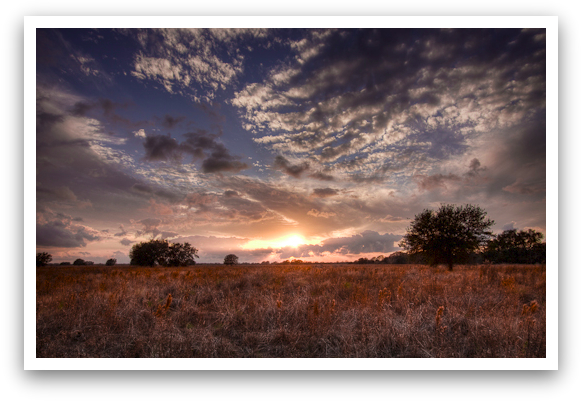Have you ever taken a photograph of a beautiful sunset and then gotten home to review the shot, just to find that the wonderful light and colors you "saw" in your viewfinder are nowhere to be found in your image? Welcome to the club!
The human eye is an incredible device, capable of recording dynamic range and color depth far beyond what the most expensive CMOS sensor can ever hope to. We can "see" detail in shadows where our camera can record only black. We can "see" variations in extreme highlights where our camera is virtually blinded by the light. This is why capturing what we "see" on digital film is so difficult at times and why HDR (high dynamic range) workflow is so alluring for photographers today.

Another Prairie Sunset
Copyright 2008 Jeff Lynch Photography
Shots taken with a Canon EOS 50D tripod mounted, EF-S 10-22mm f/3.5-4.5 USM at 22mm, f/9.5 at ISO 100 on Lexar Professional (UDMA) digital film. All post capture processing was done in Photomatix Pro 3.1, Lightroom 2 and Noise Ninja. Click on the image above for a larger version.
Last evening I sat down with my Macbook and watched Matt Kloskowski's new online training class at Kelby Training called Real World HDR. Matt does a great job of explaining how to setup your camera for HDR as well as how to use Photomatix Pro to create great looking HDR images that look incredibly detailed, rich and vibrant. Images that really capture the essence of what we "see" when we look through the camera's viewfinder.
If you've never looked into a subscription a Kelby Training, now would be a great time. Matt's Lightroom and Photoshop CS4 courses are really well done, as are all the courses I've viewed from folks like Joe McNally, Laurie Excell, Moose Peterson and Scott Kelby himself.
Posted in Photography Tagged: Canon, Canon 50D, High Dynamic Range Photography, Landscape Photography
![]()
No comments:
Post a Comment